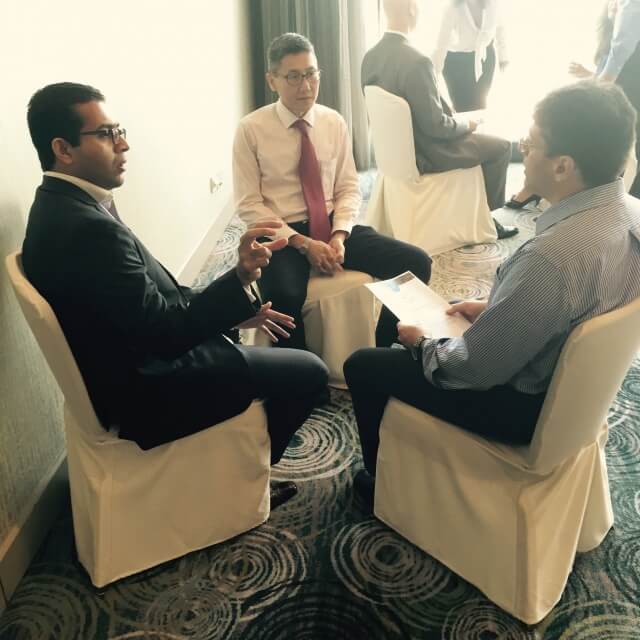
From where we sit, the roles of CMOs and CFOs are overlapping now more than ever before.
Twitter recently announced moving the marketing department under control of its CFO Anthony Noto, who was also the one who orchestrated its IPO. The new combined Kraft Heinz company has a finance executive heading its APAC business, rather than a marketing guy.
Whether this is a sign of things to come, is left to be seen.
What is clear though is that their role is no longer one of exclusively providing finance for marketing. Based on two recent R3 roundtables with finance leaders, CFO’s are getting more involved than ever in discussions around optimising the value and efficiency of marketing and digital investments.
A CMO’s priority will naturally always be in building brands and services. Their prime concern is achieving efficiency and effectiveness in their campaigns, channels and budgets. Their focus continues to be to increase brand awareness and relevance and growth. But in the world of big data and analytics, things are changing.
The CMO as CFO?
The future CMO won’t survive without being more accountable. He is going to need to bring on new financial skills to deliver:
- Accountability on Advertising to Sales Ratios – Marketing budget forecasting has moved from “What did we pay last year?” to “What’s the optimal percent of revenue to invest in marketing?” – and marketers are becoming active participants in this discussion. Apple is investing 2% of its sales into marketing – and L’Oreal 30%. Where’s the right balance?
- Lifetime Value Analysis – Once the realm of direct marketing wonks or siloed to customer management, the CMO now has access to the right Big Data to over-invest in their best customers. Cathay Pacific just opened a new First Class lounge in Hong Kong airport, with the Peninsula Group delivering the F&B – good luck getting in, if you’re not one of their top customers. And marketing is at the core of this exclusive offering.
- Working and Non-Working Ratios – We may have predicted the death of this idea too early, since what was once ‘viral’ and free has now become “buyral’ and paid – so managing the amount of paid media (working), versus agency fees and production (non-working) is a critical discussion.Whatever that magic number may be should be derived from a marketing measurement framework that is dynamic and sensitive enough to the new ways of “testing, learning and redeploying”. P&G announced this year it intends to trim US$500m of non-working media from its marketing – for most, that’s more than their total marketing budget.
The CFO as CMO?
Talking to twenty CFO’s over the last two weeks has been illuminating – they want and deserve a seat at the marketing table.
- Identifying macro trends – Such as the economic landscape, the changes in consumer spending and the likely challenges. This is not the best time to be working in luxury in China right now, given the new austerity measures, but CFO’s at places like Pernod Ricard, for example, are taking a more active role in benchmarking marketing investments for the better of the business.
- Understanding market ecosystems – Such as the switch from in-store to e-commerce – and implications on profit. One CFO of a sports brand made it clear that his stores were in danger of becoming “museums” with more and more bought through online shopping.
- Justifying the investment – Well, we’re not saying we are hearing the wedding bells ringing everywhere just yet – but just maybe, the CFO will help bring marketing back into the boardroom again , by helping to showcase how the investment is paying off.
One of our participants, Aashi Sanghvi, a head of finance from Coca-Cola believes that finance “should know when to wear the ‘business hat’ versus the ‘finance hat’ to earn an early seat on the marketing decision table”. She added that the success of the global campaign ‘Share a Coke’ is attributed to factors beyond marketing, like bottling, logistics and trade marketing and the ROI was looked at holistically including the capital investment in the initiative.
Radi Soemarjono, a finance and strategic Leader at P&G, put it a similar way.
Soemarjono said, “The common complaint is that Finance is more consumed with short-term ROI rather than long-term brand awareness”, “Finance teams need to realise that reduction in marketing investment can have impact on brand relevance especially in the FMCG sector where base level investment is a necessity” he added.
Marketing needs to bring finance along the journey from the start. This helps building trust and both parties can complement each other’s strengths. It’s important that both think about the business upfront before getting into their individual field of expertise.
Role reversals are never easy, but only by doing so can both parties work together towards a common outcome.

R3 CFO Roundtables were held in multiple location in June 2015 and included financial leaders from P&G, Coca-Cola, AirBnB, JNJ, Standard Chartered Bank, AIG, Ferrero, Fonterra, Peugeot and others.

Seema Punwani is a Senior Consultant with R3. Her 18 years work experience ranges from integrated communications to discipline specific – Above and Below-the-line Advertising, Digital, CRM, Shopper Marketing. She has work as part-time lecturer in her spare time.





